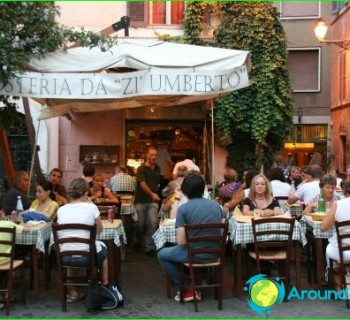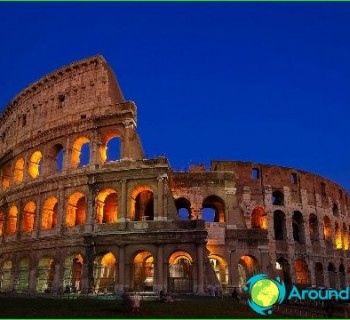History of Rome

One of the most beautiful cities in the world, the famous "Eternal City" and the pearl of the once legendary Roman Empire, Rome, is located in the central part of the Apennine Peninsula on the picturesque banks of the Tiber River. Today this beautiful city with a rich history and an abundance of historical monuments from different eras is the capital of Italy, as well as a major cultural, economic and political center of Europe. In the very heart of Rome, on the Vatican Hill, there is also the tiny Catholic city-state of the Vatican - the seat of the highest spiritual leadership of the Roman Catholic Church and one of the most influential states in the world..
The history of this ancient city is more than 2700 thousand years old and it is one of the oldest continuously inhabited cities in Europe. And although historians still argue about the exact date of the founding of Rome, the official version says that the city was founded on April 21, 753 BC, and the history of its foundation is closely intertwined with the long-standing legend of two brothers - Romulus and Remus. It is believed that it was Romulus, who killed his brother, who laid the ancient city on the Palantin hill, giving it his name. Romulus also became the first ruler of the so-called Roman kingdom. It was here, back in the 8th century BC. and the famous Roman law was born, which existed for about 1500 years and became the prototype of the legal systems of many modern states.
In the following centuries, the forms of government were repeatedly changed and improved, reflecting the social and political aspects of ancient Roman society, and as a result of numerous hostilities, the borders expanded significantly ... To replace the Roman kingdom already in 509 BC. came the Roman Republic (509-27 BC), and then the powerful Roman Empire, which became one of the most influential states of its time, the peak of its heyday came in the 2nd century AD.
The further history of the Roman Empire is not original. Due to instability and constant internal strife, the once united and strong state for a long time was actually on the verge of collapse. Gradually lost its influence on the political and economic Olympus and Rome. In 330, the capital of the empire was completely transferred by Emperor Constantine I to Byzantium, better known as Constantinople (modern Istanbul), while Rome was subsequently repeatedly attacked and robbed..
In the second half of the 8th century, Rome became the center of the Papal States (theocratic Papal State). This is how a new and no less exciting era begins in the history of the ancient city. By the end of the 15th - early 16th century, Rome became one of the main centers of the Italian Renaissance, the brightest representatives of which (Michelangelo, Raphael, Leonardo da Vinci, Botticelli, etc.) had a tremendous influence on the further development of European culture and art ... Rome existed in the status of the capital of the Papal Region until 1870 (with the exception of a few short periods), after which it became part of the Kingdom of Italy, and after 1946 it became the capital of the modern Italian Republic..
Today Rome is one of the most popular tourist destinations in Europe. Its historical center, which has preserved an incredible number of historical and architectural monuments to this day, is included in the UNESCO World Heritage List. Every year, hundreds of thousands of tourists from all over the world come here to see with their own eyes the famous Roman Forum and the Colosseum, the Pantheon and Trajan's Forum, stunning Roman fountains, Vatican shrines (St. Peter's Basilica, the Sistine Chapel, fantastic museums, palaces and papal gardens), and much more.
Photos of Rome
Coat of arms of Rome
Rome in 1834
Imperial Forum
Coliseum
St. Peter's Basilica
Trevi Fountain
Capitol
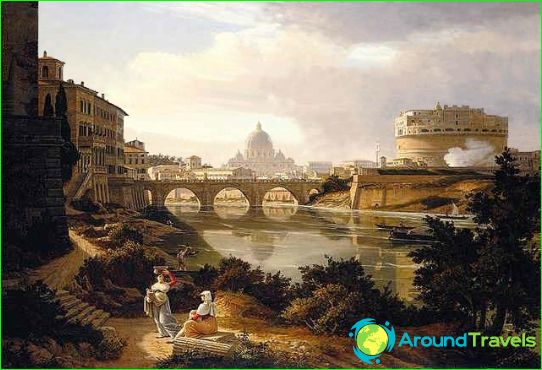 Rome in 1834
Rome in 1834 Imperial Forum
Imperial Forum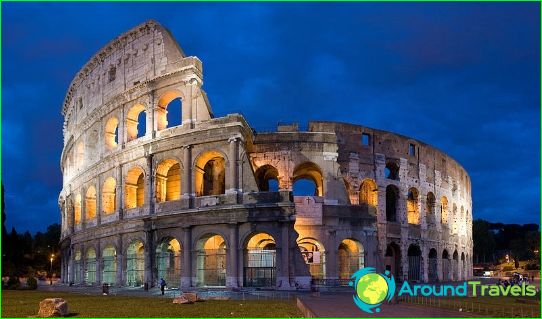 Coliseum
Coliseum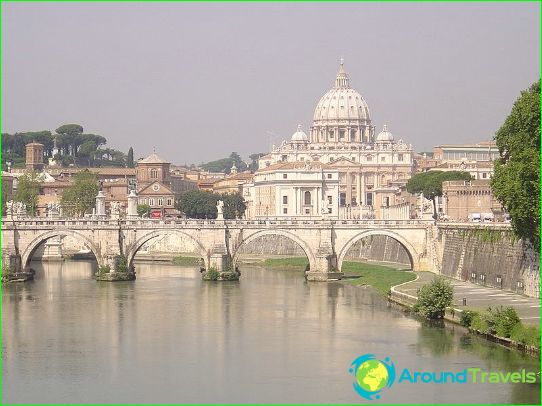 St. Peter's Basilica
St. Peter's Basilica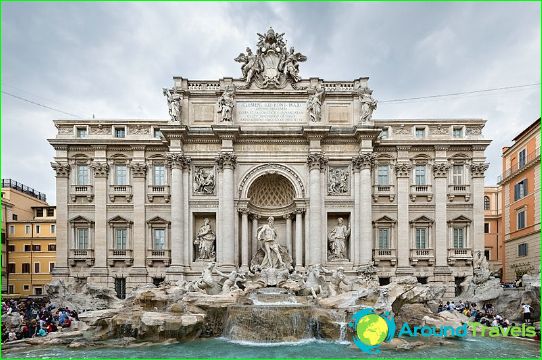 Trevi Fountain
Trevi Fountain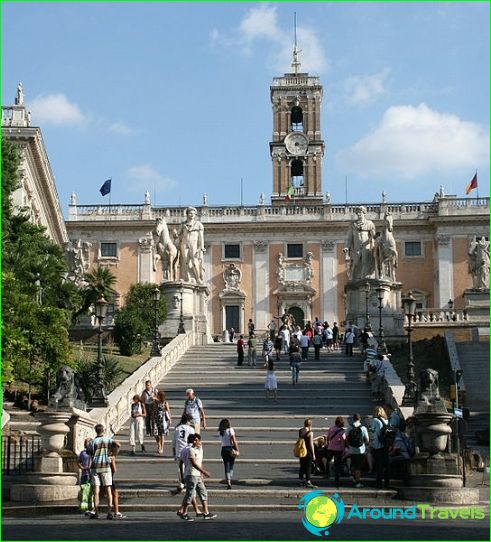 Capitol
Capitol